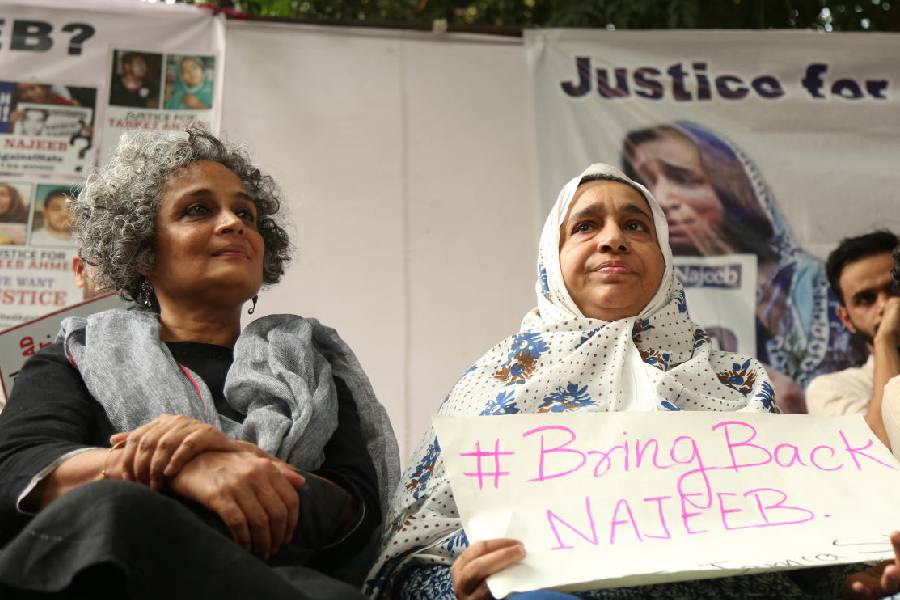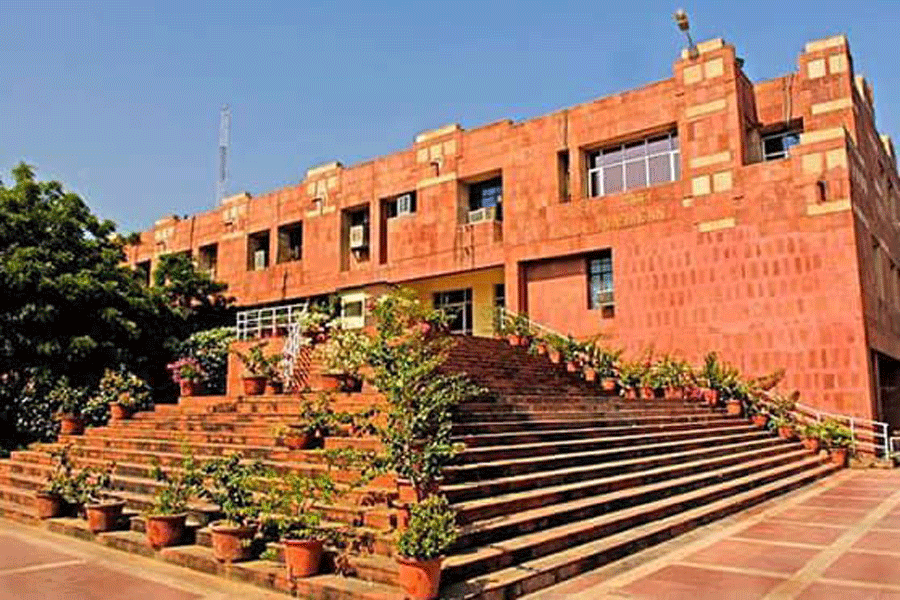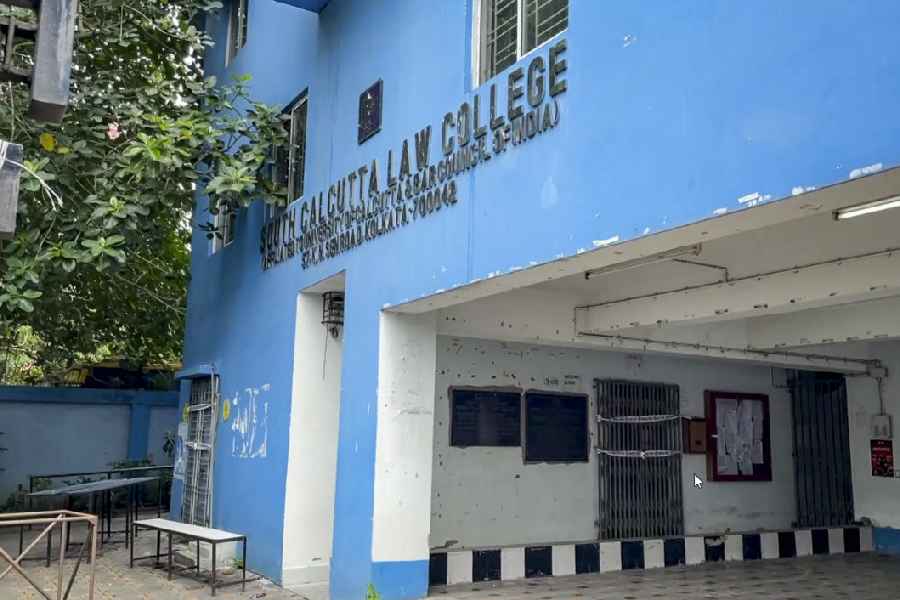 |
| A dog loiters near the super-specialty block of RIMS in Ranchi on Tuesday. Picture by Hardeep Singh |
If you see doctors armed with hockey sticks, badminton rackets or batons at Rajendra Institute of Medical Sciences (RIMS), do not stare them out. Instead, consider doing the same. The state-run hospital in Ranchi is under canine attack.
On Monday night, a stray dog loitering near the hostel bit a PG doctor and an MBBS student. Both were administered the anti-rabies vaccine.
On February 10, head of surgery at RIMS Dr N.K. Jha was attacked and wounded, followed by eight others who were mostly kin of patients.
Scared out of their wits by the twin incidents, students, doctors and employees now prefer to be extra cautious. While women prefer not to step out of their hostel after sundown, men carry anything that might come in handy against a hostile four-legged adversary.
After the February 10 serial dog attacks, the RIMS management had urged the Ranchi Municipal Corporation (RMC) for extreme action. However, the dogcatchers sent in by the civic body failed to net a single stray.
Institute director Dr Tulsi Mahto expressed his concerns over Monday’s incident and said he would once again write to the RMC for help.
Chief executive officer of RMC Manoj Kumar told The Telegraph that he was equally worried over frequent dog bites being reported from different parts of the city. “I have asked dogcatchers to prioritise areas such as hospitals and other important public places,” he said.
Records show that Ranchi witnessed more than 200 canine attacks between February 10 and 13. The sadar hospital alone administered anti-rabies to 482 people, of which 200 were from the municipal area. The figure for the first week of the month was around 100, suggesting that man’s best friend is increasingly becoming intolerant towards him.
Vets have falsified the common assumption that these aggressive dogs are mad.
“This is the tail-end of the winter breeding season for dogs. Mothers with pups are overprotective. So, do not disturb them. Do not threaten or hit them. Do not venture near the young ones,” said Suranjan Sarkar, an eminent veterinarian.
S.K. Sinha, another city vet, added: “Prevention is better than vaccine. So, stay away from strays. Avoid a conflict in the first place. Dogs normally don’t ambush humans. They attack only if they feel threatened.”
The animal experts are, however, in favour of a sterilisation drive given the burgeoning canine population in the capital.
“The civic body should consider running a serious campaign,” one of them said.
Incidentally, the RMC had entrusted HOPE and Animal Trust with the job.
Pravin Ohal of the Trust claimed 6,677 dogs had been sterilised and vaccinated between April 2013 and February 10. Another 9,379 have been administered anti-rabies injections. He also supported the vet opinion that the attacking dogs were not frenzied by nature, but only new mothers protecting their offspring.
Sources said the animal husbandry department has marked the population of canines at 1,000 per ward, which means the city has 55,000 dogs. It also means that the Trust has a long way to go.










